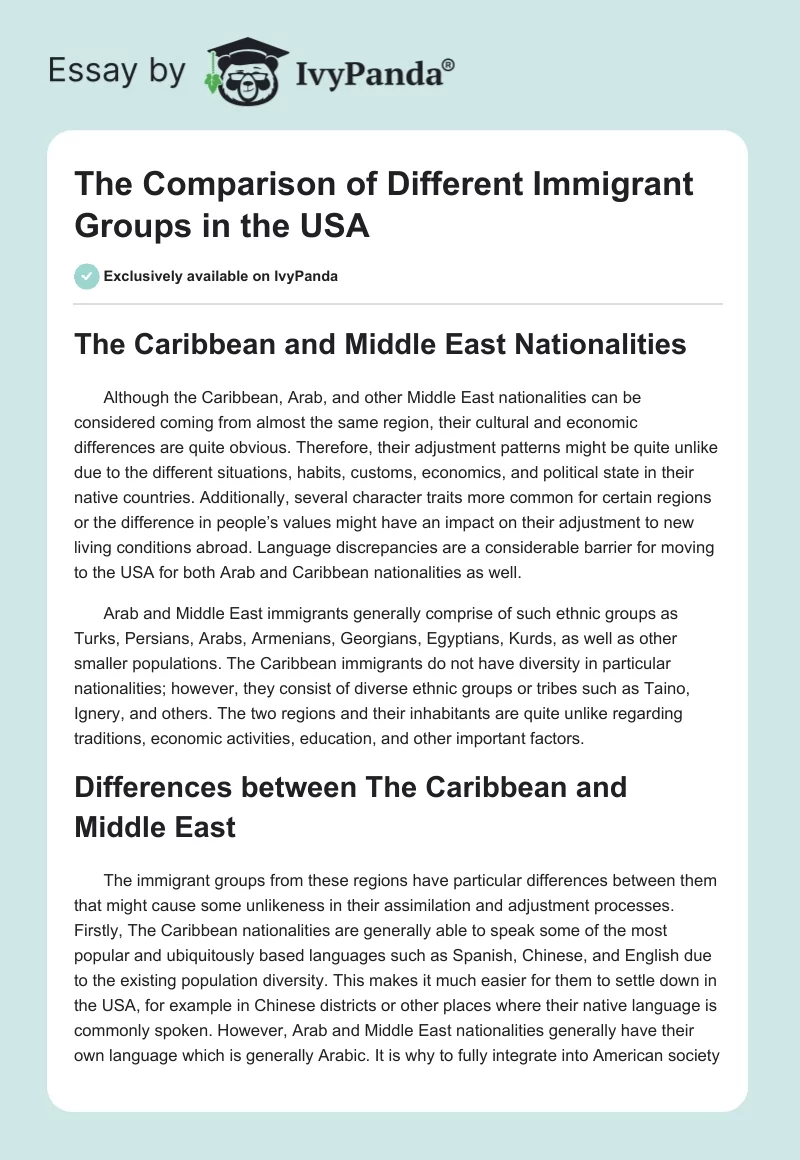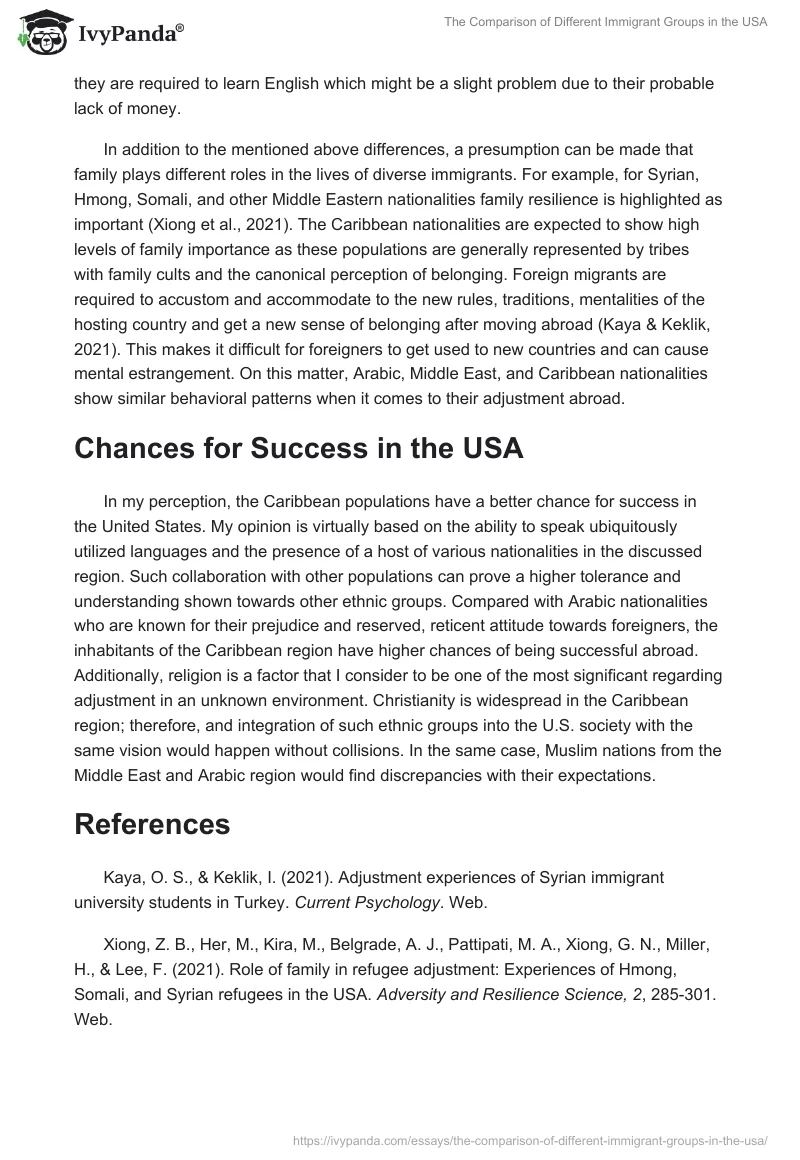The Caribbean and Middle East Nationalities
Although the Caribbean, Arab, and other Middle East nationalities can be considered coming from almost the same region, their cultural and economic differences are quite obvious. Therefore, their adjustment patterns might be quite unlike due to the different situations, habits, customs, economics, and political state in their native countries. Additionally, several character traits more common for certain regions or the difference in people’s values might have an impact on their adjustment to new living conditions abroad. Language discrepancies are a considerable barrier for moving to the USA for both Arab and Caribbean nationalities as well.
Arab and Middle East immigrants generally comprise of such ethnic groups as Turks, Persians, Arabs, Armenians, Georgians, Egyptians, Kurds, as well as other smaller populations. The Caribbean immigrants do not have diversity in particular nationalities; however, they consist of diverse ethnic groups or tribes such as Taino, Ignery, and others. The two regions and their inhabitants are quite unlike regarding traditions, economic activities, education, and other important factors.
Differences between The Caribbean and Middle East
The immigrant groups from these regions have particular differences between them that might cause some unlikeness in their assimilation and adjustment processes. Firstly, The Caribbean nationalities are generally able to speak some of the most popular and ubiquitously based languages such as Spanish, Chinese, and English due to the existing population diversity. This makes it much easier for them to settle down in the USA, for example in Chinese districts or other places where their native language is commonly spoken. However, Arab and Middle East nationalities generally have their own language which is generally Arabic. It is why to fully integrate into American society they are required to learn English which might be a slight problem due to their probable lack of money.
In addition to the mentioned above differences, a presumption can be made that family plays different roles in the lives of diverse immigrants. For example, for Syrian, Hmong, Somali, and other Middle Eastern nationalities family resilience is highlighted as important (Xiong et al., 2021). The Caribbean nationalities are expected to show high levels of family importance as these populations are generally represented by tribes with family cults and the canonical perception of belonging. Foreign migrants are required to accustom and accommodate to the new rules, traditions, mentalities of the hosting country and get a new sense of belonging after moving abroad (Kaya & Keklik, 2021). This makes it difficult for foreigners to get used to new countries and can cause mental estrangement. On this matter, Arabic, Middle East, and Caribbean nationalities show similar behavioral patterns when it comes to their adjustment abroad.
Chances for Success in the USA
In my perception, the Caribbean populations have a better chance for success in the United States. My opinion is virtually based on the ability to speak ubiquitously utilized languages and the presence of a host of various nationalities in the discussed region. Such collaboration with other populations can prove a higher tolerance and understanding shown towards other ethnic groups. Compared with Arabic nationalities who are known for their prejudice and reserved, reticent attitude towards foreigners, the inhabitants of the Caribbean region have higher chances of being successful abroad. Additionally, religion is a factor that I consider to be one of the most significant regarding adjustment in an unknown environment. Christianity is widespread in the Caribbean region; therefore, and integration of such ethnic groups into the U.S. society with the same vision would happen without collisions. In the same case, Muslim nations from the Middle East and Arabic region would find discrepancies with their expectations.
References
Kaya, O. S., & Keklik, I. (2021). Adjustment experiences of Syrian immigrant university students in Turkey. Current Psychology. Web.
Xiong, Z. B., Her, M., Kira, M., Belgrade, A. J., Pattipati, M. A., Xiong, G. N., Miller, H., & Lee, F. (2021). Role of family in refugee adjustment: Experiences of Hmong, Somali, and Syrian refugees in the USA. Adversity and Resilience Science, 2, 285-301. Web.


